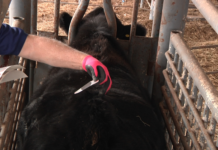For farmers, managing risk is second nature. From planting diverse crops to provide staggered harvesting windows and marketing options, buying crop insurance, stockpiling grass and hay for cattle in case of drought to vaccinating calves against disease, farmers are always prepared for the common risks associated with their profession.
However, the COVID-19 pandemic has brought with it exponential risks that no one could have imagined. So much so that the risks posed to the field of farming could not have possibly been foretold. Trying to keep farm hands safe with prevention measures like social distancing as well as getting supplies when most stores are shutting down is proving to be quite the challenge.
One of the probable mitigation methods for farmers in this case would be learning from history. For instance, imagining substitutes in the place of livestock feed. This will come in handy when the farmer is unable to buy livestock feed.
On the other hand, it is important for farmers to have a farm risk-management plan. Below are the steps farmers can take in developing a plan for managing risk:
Consider the five main sources of risk.
This step involves framing the entire farm and have a family plan that takes into account the ever-present risks associated with finances, production, marketing, human interaction, and legal issues. These shape the overview for managing risk. According to experts, this plan should address issues such as hike in prices, adverse weather conditions or even fertility issues in cattle.
Take stock of your operation and its course.
It is important to do an inventory of the farm assets and its resources. Also important to consider is the goals in terms of objectives like sustaining profits.
Identify action steps
Setting near- and long-term goals lets you build a path that leads you from your present circumstances to the imagined picture you see of your farm or ranch in the future.
Chart a near-term and long-term course of action
Set a timeline for your goals and the triggers that will instigate each action step. Build flexibility into timelines in order to take advantage of unforeseen opportunities, he says, and to safeguard your operation against unforeseen threats. This flexibility might help you imagine the creative substitutes and alternative management approaches that you could fall back on in the direst of circumstances.









